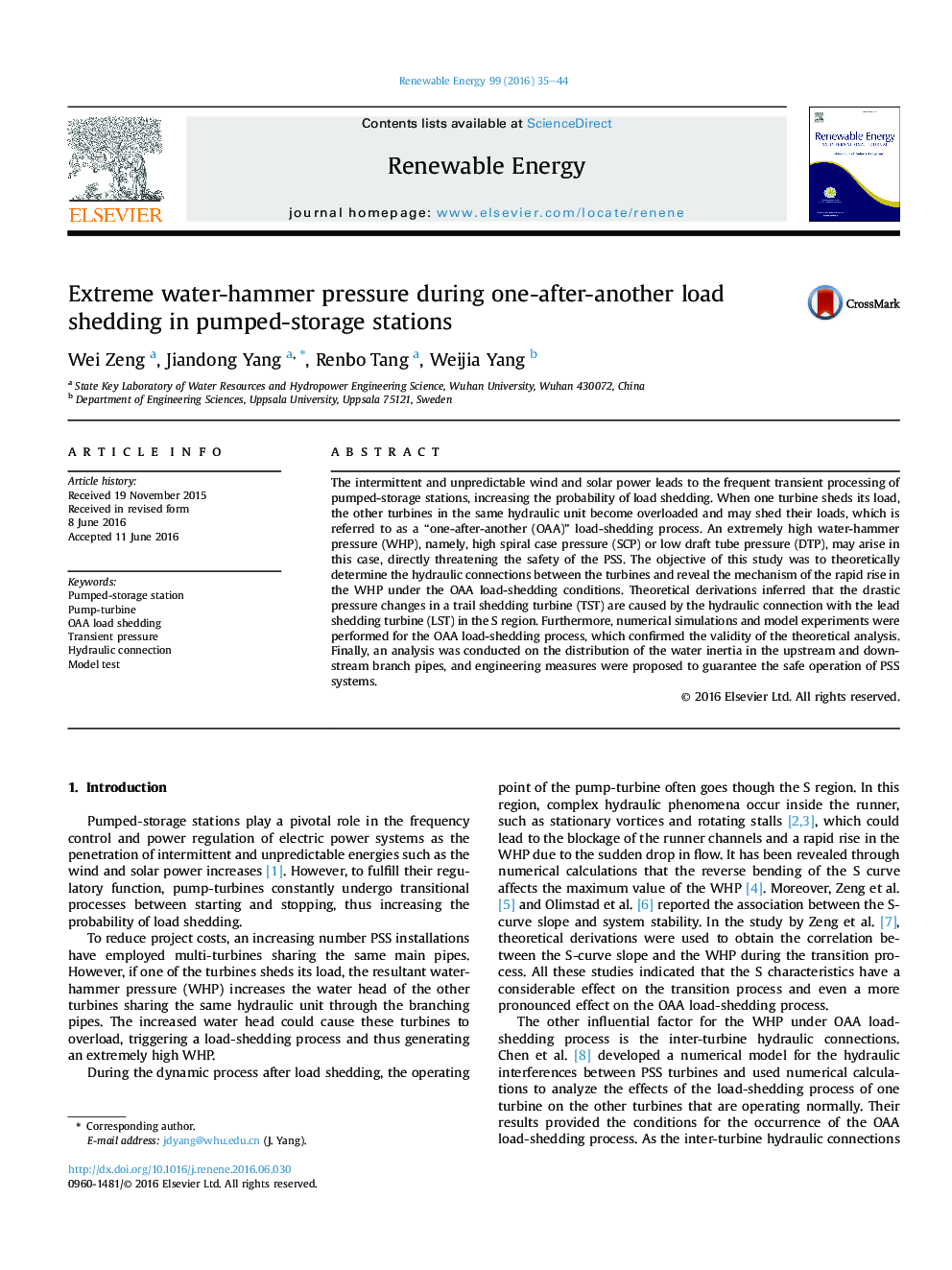| Article ID | Journal | Published Year | Pages | File Type |
|---|---|---|---|---|
| 6765358 | Renewable Energy | 2016 | 10 Pages |
Abstract
The intermittent and unpredictable wind and solar power leads to the frequent transient processing of pumped-storage stations, increasing the probability of load shedding. When one turbine sheds its load, the other turbines in the same hydraulic unit become overloaded and may shed their loads, which is referred to as a “one-after-another (OAA)” load-shedding process. An extremely high water-hammer pressure (WHP), namely, high spiral case pressure (SCP) or low draft tube pressure (DTP), may arise in this case, directly threatening the safety of the PSS. The objective of this study was to theoretically determine the hydraulic connections between the turbines and reveal the mechanism of the rapid rise in the WHP under the OAA load-shedding conditions. Theoretical derivations inferred that the drastic pressure changes in a trail shedding turbine (TST) are caused by the hydraulic connection with the lead shedding turbine (LST) in the S region. Furthermore, numerical simulations and model experiments were performed for the OAA load-shedding process, which confirmed the validity of the theoretical analysis. Finally, an analysis was conducted on the distribution of the water inertia in the upstream and downstream branch pipes, and engineering measures were proposed to guarantee the safe operation of PSS systems.
Related Topics
Physical Sciences and Engineering
Energy
Renewable Energy, Sustainability and the Environment
Authors
Wei Zeng, Jiandong Yang, Renbo Tang, Weijia Yang,
